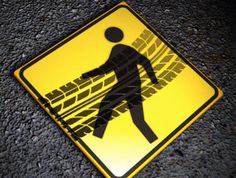Hit and run OCD is one of the most insidious and frustrating subtypes of OCD. It can feel like you are constantly being attacked by intrusive thoughts, and when you finally have a moment of respite, you act on them without thinking. This can lead to disastrous consequences, both for yourself and for the people around you. In this blog post, we will discuss the insanity of hit-and-run OCD and provide some tips on how to deal with it.
Contents
What Is Hit And Run OCD?

Hit and run OCD, also commonly known as driving OCD, is a subtype of OCD characterized by intrusive thoughts about harming others. These thoughts can be so graphic and disturbing that they lead to anxiety and distress. People with hit-and-run OCD often worry that they will act on their thoughts and hurt someone. As a result, they may avoid situations where they might be around people, such as driving or being in public places.
Hit and run OCD can also lead to compulsive behaviors, such as checking on people to make sure they are okay or repeatedly apologizing. It can cause paranoia around accidents, mishaps, and a fear of driving, which can further hurt one’s personal and social life. One common characteristic of driving OCD is that it can also make the sufferer convince others around them of the possibility of something bad happening.
Causes
There is no one cause of hit-and-run OCD. However, it is thought to be associated with a combination of genetic and environmental factors. Some research suggests that people with hit and run OCD may have an imbalance in the brain chemicals serotonin and dopamine. Additionally, stressful life events or trauma may trigger the onset of hit-and-run OCD.
Past traumatic memories surrounding the involvement in on-road accidents can also be the cause of developing apprehensions and obsessive, irrational thoughts and anxieties. Someone with OCD may be prone to engage in compulsive behaviors that soothe these fears.
Symptoms

The symptoms of hit-and-run OCD can vary from person to person. However, common symptoms include:
- Intrusive thoughts about harming others
- Anxiety and distress
- Avoidance of situations where there might be people around
- Checking on people to make sure they are okay
- Repeatedly apologizing
- Being nervous about potholes/uneven roads
- Paranoia around accidents, mishaps, and driving
- Constantly seeking external reassurance
- Taking longer, more inconvenient routes to avoid traffic
If you or someone you know is experiencing these symptoms, it is important to seek professional help. Left untreated, hit-and-run OCD can have a significant impact on one’s quality of life.
Effects

The effects of hit-and-run OCD can be far-reaching and devastating. It can lead to
- isolation
- increased paranoia
- anxiety
- sweatiness
- stress
- false images/hallucinations
- increase in paranoia
- being fearful of rules
Treatment Available
Just like any other type of mental disorder, the symptoms and effects can be managed through therapeutic intervention and self-help tips.
Therapy
Treatment for hit-and-run OCD typically involves a combination of medication and psychotherapy. Medication can help to reduce the frequency and intensity of intrusive thoughts. Commonly prescribed medications include selective serotonin reuptake inhibitors (SSRIs) and serotonin-norepinephrine reuptake inhibitors (SNRIs). Psychotherapy, such as cognitive-behavioral therapy (CBT), can help to identify and challenge negative thoughts and beliefs. CBT can also teach people coping and problem-solving skills.
Self Help Tips
Some self-help tips can be useful in managing the symptoms and their influence. These include:
• Identifying your triggers: Try to identify what situations or environments trigger your hit-and-run OCD thoughts. Once you know what triggers your thoughts, you can try to avoid these situations.
• Challenging your thoughts: Try to challenge them by asking yourself whether it is realistic and probable. Most likely, the answer will be no.
• Practicing mindfulness: Mindfulness involves being present at the moment and accepting things as they are without judgment. This can further help to reduce anxiety and intrusive thoughts.
• Exposing yourself to your fears: This technique, known as exposure and response prevention (ERP), involves gradually exposing yourself to situations that trigger your OCD thoughts. For example, if you are afraid of driving, you may start by sitting in the driver’s seat with the engine off. As you become more comfortable, you can slowly progress to driving around the block.
- Take small steps: Start by driving slow in a secluded street to get used to the idea of driving freely. Slowly, start by escalating towards a more crowded area. Ask someone to assist you while going out.
Conclusion
In conclusion, hit and run OCD is a serious condition that can have a detrimental effect on one’s life. If you or someone you know is struggling, please seek professional help. With proper treatment, people can equip skills and strategies to lead happy and fulfilling lives.
If you are looking for affordable Online OCD Counseling MantraCare can help: Book a trial OCD therapy session


